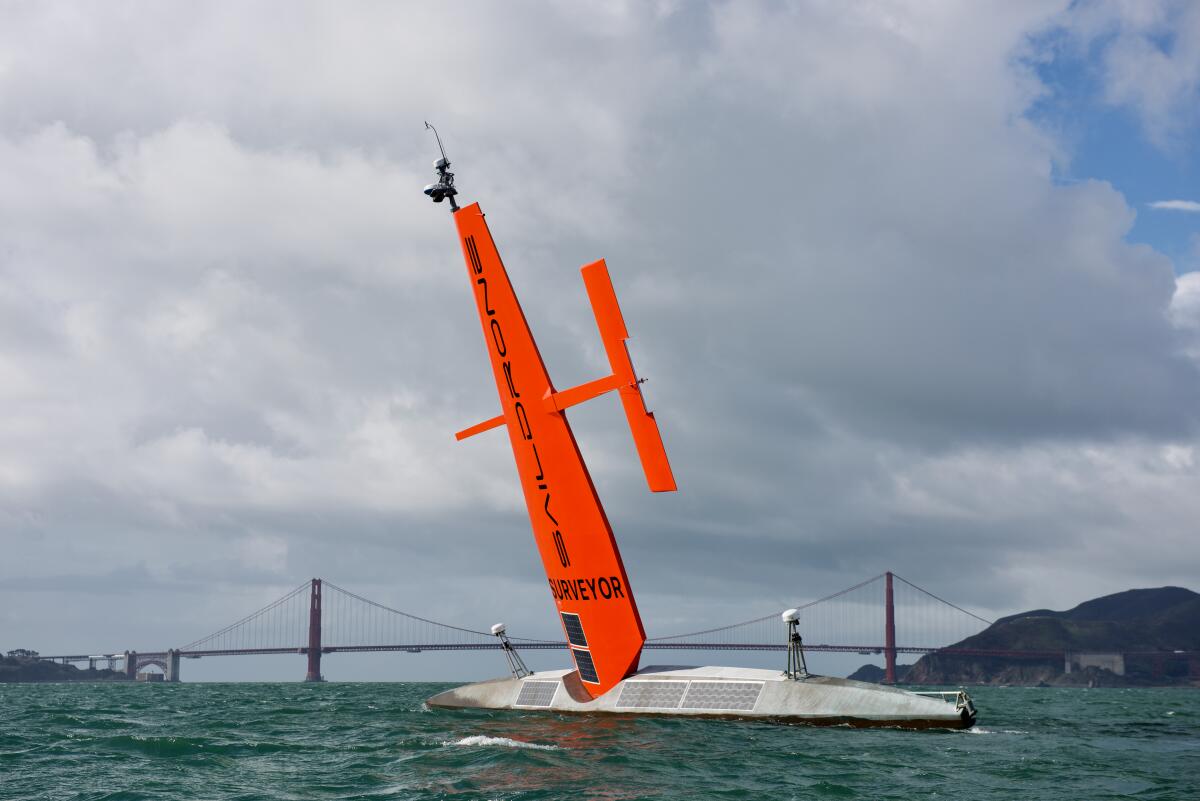Sea expedition discovers a 3,300-foot-tall butte off California coast

“It’s commonly said that we know more about the surface of the moon than we do the bottom of the ocean,” said Aurora Elmore of the National Oceanic and Atmospheric Administration.
A recent discovery provided proof of the truth of that maxim: A mountain taller than Sandstone Peak, the highest summit in the Santa Monica Mountains, has been found in the ocean not far off Northern California.
The 3,300-foot-tall sea mountain, or seamount, was found about 200 miles off the coast during an expedition by an unmanned sea mapping vehicle.
Starting last summer, the Saildrone Surveyor — billed as the “world’s largest uncrewed ocean mapping vehicle” — spent several months exploring the Aleutian Islands in Alaska and the ocean off California in an expedition funded by NOAA and the Bureau of Ocean Energy Management.
The vehicle mapped more than 13,000 square nautical miles during its expedition.
“When [the seamount] was found, people got really excited that there was a big feature that no one was previously aware of and that had not yet been mapped in any kind of detail,” said Elmore, cooperative institute manager at NOAA, in an interview with The Times.
A 9-year-old girl didn’t want her goat slaughtered. California fair officials sent deputies after it
Jessica Long’s 9-year-old didn’t want her goat, Cedar, to be slaughtered at the county fair. Officials sent deputies with a search warrant to get it back.
The discovery was notable for a couple of reasons, Elmore explained — the seamount was found in an area where the features are uncommon, and it has an unusual shape.
“There are other seamounts along the coast of California,” she said, “none in this exact region, but some to the north and to the south.”
Additionally, seamounts are commonly shaped like mountains on land, with sloped sides leading to a peak. But the one discovered by Saildrone more closely resembles a butte like those found in the deserts of the Southwest.
Its sides are sheer and vertical, and on its top is a 100-foot-deep caldera.
Elmore said researchers do not know why or how the seamount gained its cylindrical shape but said it was most likely a volcanic formation.
“We would need to do more tests and go back and collect geologic samples and sedimentary samples in order to better understand the environment that the seamount is in as well as how it might have formed,” she said.
So far, allergy experts say, Southern California’s pollen levels are moderate for this time of the year. But the worst is yet to come.
The mapping of the seafloor for features such as seamounts and canyons is important not only for finding geological hazards but for ecological reasons as well, Elmore said.
“There are species, especially of fish that prefer to live in a certain water depth, and they island-hop from one seamount to another,” she said. “Without the seamount’s unique ecosystems, they wouldn’t have enough food to eat; they wouldn’t be able to be at their preferred depth range.”
Deep-sea fisheries could use the information to find new fishing grounds, she said.
The recent discovery “is just a really good example of all the things we don’t yet know about the bottom of the ocean,” she said, noting that roughly 50% of the ocean floor in U.S. territorial waters remains unmapped.
“We don’t even have a general understanding of a lot of what’s down there,” Elmore said. “So I think this is sort of a reminder to all of us in the ocean sciences about how much remains to be explored and discovered in the deep sea.”
More to Read
Sign up for Essential California
The most important California stories and recommendations in your inbox every morning.
You may occasionally receive promotional content from the Los Angeles Times.












